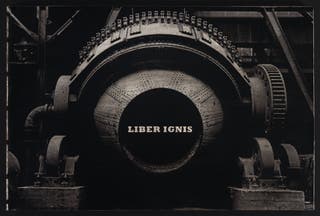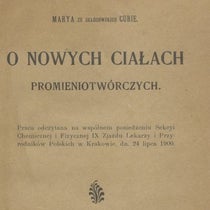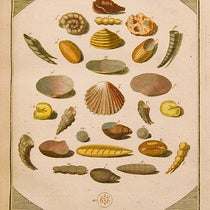New Acquisition: Liber Ignis

Title page, Peter Koch, Adam Cornford, and Jonathan Gerken, Liber Ignis. Berkeley: Editions Koch, 2015
A book of poetry is not the kind of thing one might expect to find in the Library’s collection. However, poems are parts of famous books in the Library’s collections – take, for example, Edmond Halley’s poem in praise of Newton in the Principia, or Faber and Stelluti’s introductory poem in Galileo’s Il Saggiatore. Indeed, the only known biographical source we have about Petronella de Johanna de Timmerman is included in a book of her poems. So, perhaps, poems are not as out of bounds as they might seem.

Adam Cornford’s poems in Liber Ignis are about copper mining and smelting in Butte, Montana, drawing from secondary sources in the Library’s collection – including LeCain’s Mass Destruction: The Men and Giant Mines That Wired America and Scarred the Planet. Of course, the subject of Liber Ignis – mining – is very well represented in the Library’s collections. The library of the combined Engineering Societies included the books of the American Institute of Mining Engineers, which the Library acquired in 1995. The poems are printed from a photopolymer plate on split microfiber sheets laminated with felt, as each text page interleaves a facing image. The depth and breadth of the Library’s holdings in mining give a unique context for Liber Ignis – not only can patrons read the poems and see the historical images of mining and smelting in Butte, but they can also read primary source accounts about these processes.
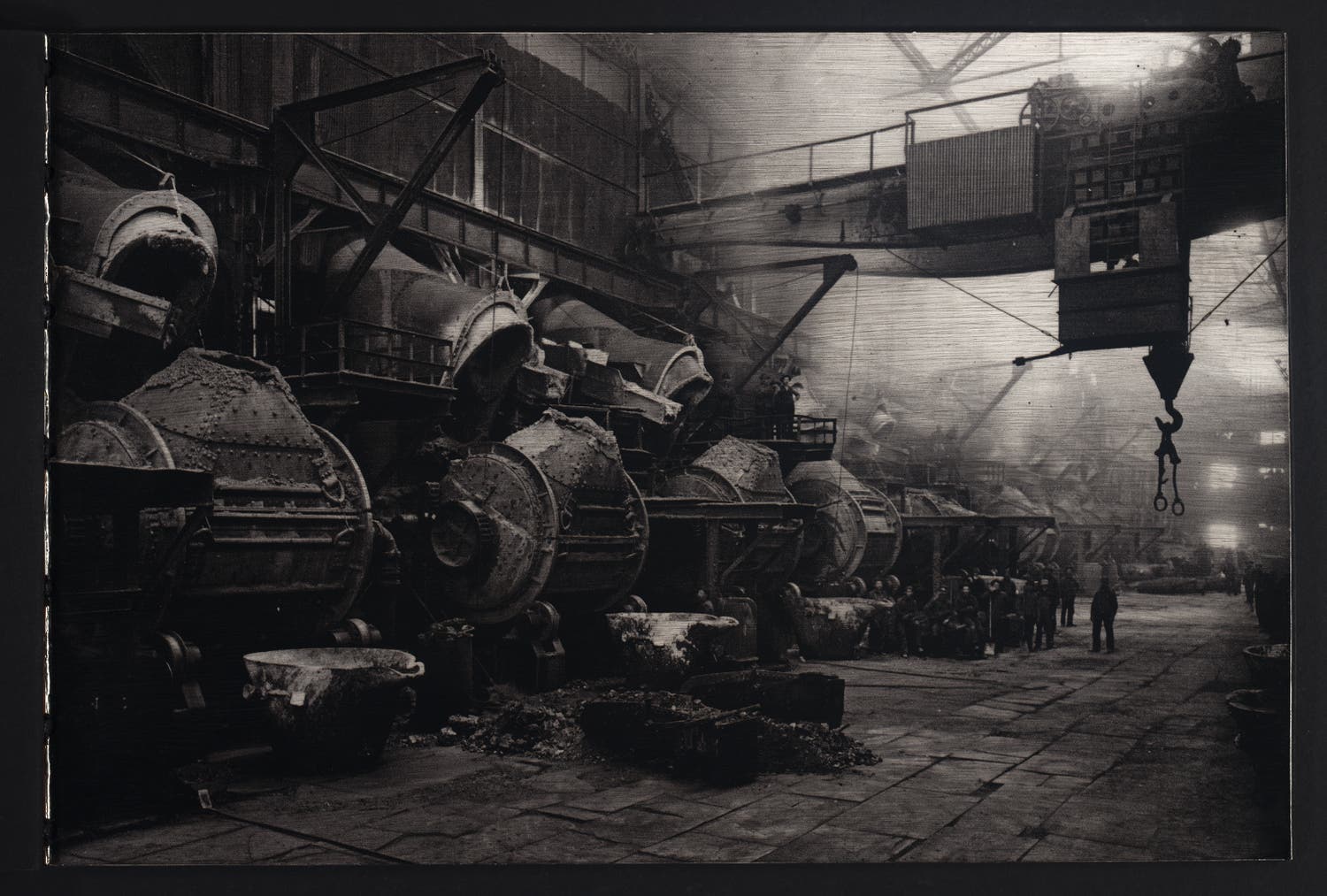
“Converter, Anaconda smelter,” printed on lead
One might expect a book with 12 pages to be small and lightweight. Liber Ignis measures 12 x 18 inches, and weighs over 30 pounds. The book is so heavy, as half of it, six pages of images, are printed on lead instead of on paper, and the top lid of the clamshell that holds it is copper. Recall that the subject of the book is copper mining, which appears first to the viewer. There are also “veins” of gold added by the letter carver Christopher Stinehour, who also created the title letters in the copper. Steinhour created the lettering, in Rockwell Gothic, by sandblasting the letters and gilding the letter I in LIBER. That copper cover, the product of the mine in Butte, is underpinned by the sheets of lead, which itself was a byproduct of copper mining. The toxic and dense metal is the substrate for the historical images of mining in the book, sourced from the collections of the Montana Historical Society, the World Museum of Mining, the Butte Silverbow Archive, and the Library of Congress.

“Zinc plant, cathodes, & strippers,” printed on lead
The book’s creator, Peter Koch, recently shared the process of how he and Jonathan Gerken (described as the project’s engineer) printed images on lead. Through trial and error, they discovered a process that was both durable and pliable, suitable to the 0.033 inch thick lead “pages.” Koch and Gerken first tested the use of acrylics directly on the lead, which did not meet their needs. They tested several primers for the surface, eventually selecting a paint intended to be used as “blacking” on the hulls of metal boats and ships that was durable and pliable. On this initial layer was added a white acrylic, and on that layer the images were printed at Magnolia Editions on a very large format inkjet printer designed to print billboards. Koch noted that the resulting images did not have the atmospheric intent he was aiming for, so over the image was added a layer of clear acrylic mixed with bone-black to bring the whites down and give a hazy look to the images.
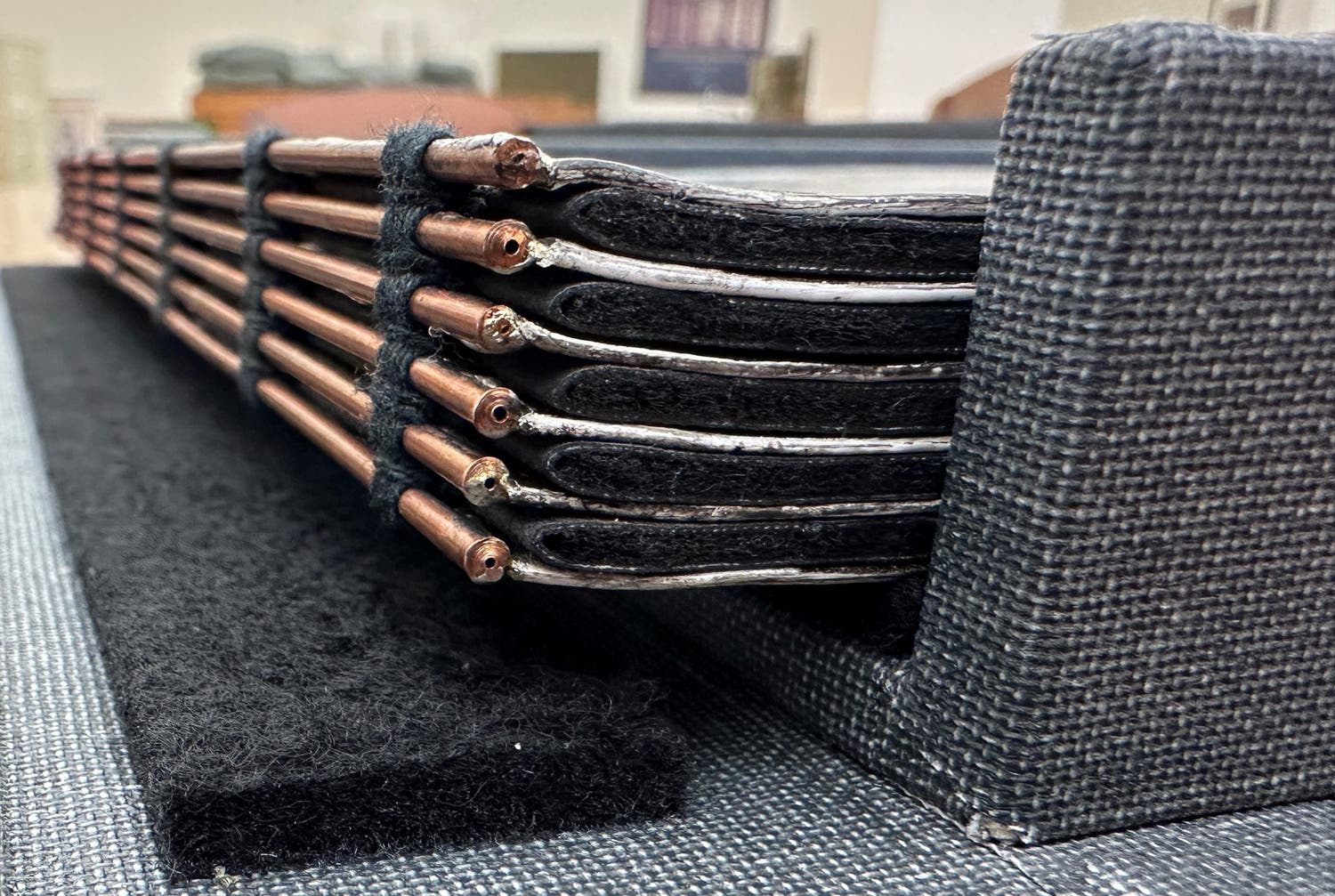
Detail of binding structure
How, then, should one bind a book with pages of lead? Traditionally, books on paper or vellum are bound with cloth thread and supporting strips of cloth, paper, or leather – but this is no traditional book. As stated in the prospectus for the book, Koch and Gerken tried “woven copper grounding straps acting much like linen tapes, small ferrules linking one page to the next, interlocking copper brackets soldered to the edges of pages, etc” all of which did not meet their needs. They settled on soldering the lead sheets to copper tubing, which in turn were sewn on to linen cords with the text pages to form a binding structure. Interestingly, this structure has parallels in the Library’s collection. A sizeable number of items from the ESL library, mentioned above, are pamphlets bound together in a single volume, and these items are also bound with copper wire, a remarkable physical connection with the Library’s collection.

Detail of copper wire on binding for ESL item, “Report of Geological Survey in Minnesota”

Copper cover, Liber Ignis
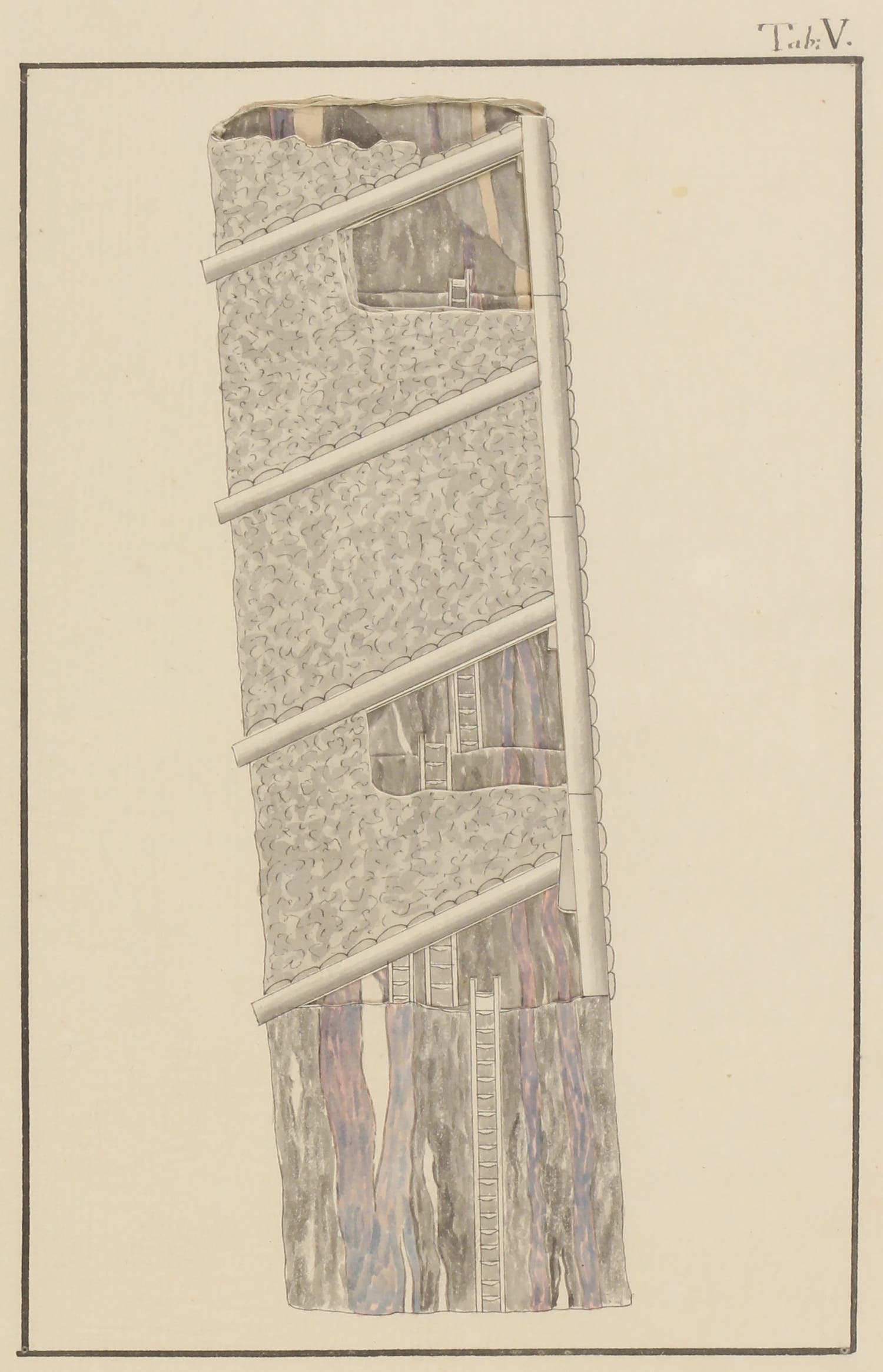
Plate V, German mining manuscript
Another notable visual connection is the copper lid of the clamshell box of Liber Ignis, which has gold inlaid in it like veins. There is a strong visual similarity between this lid and the cut out pages at the back of a 19th century German mining manuscript, depicting the construction and arrangement of mineshafts in the Freiberg and Hartz mountains, itself from the ESL acquisition.
Much like ore is refined into metal, so this book reduces and embodies mining in Butte, not only in its content, but also in its materiality. These direct and indirect connections to the Library’s collection made this book of poetry, printed on lead and bound with copper an important addition to the collection, made during the CODEX symposium and fair in 2024.

